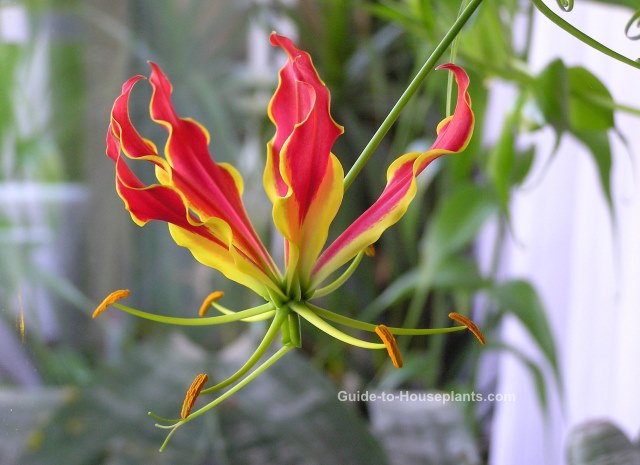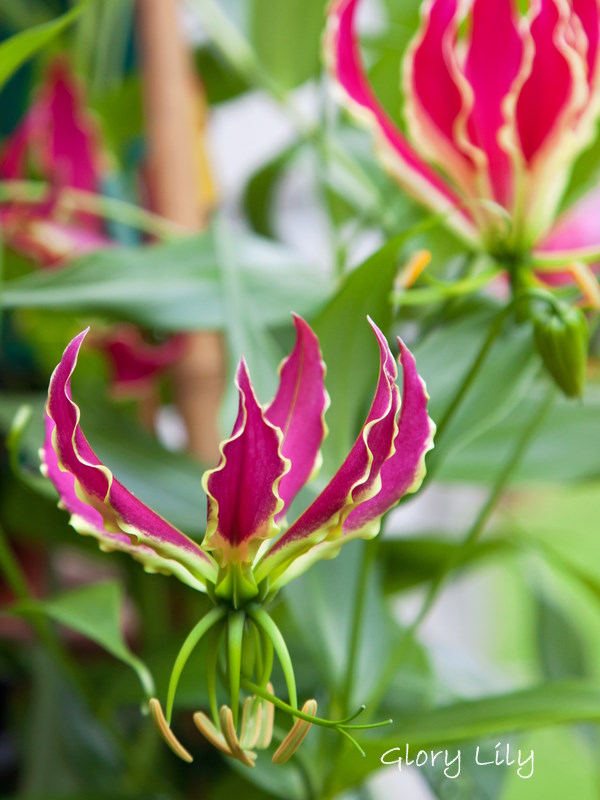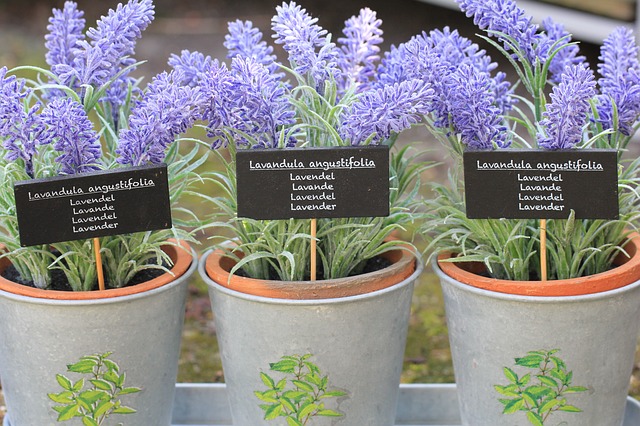Glory Lily Plant Care
Glory Lily is a perennial tropical flowering vine that makes a stunning, exotic house plant.
Here you'll discover how to grow Gloriosa lily house plant, how to train its climbing vines, and how to plant tubers to keep it going year after year.

Get to Know Glory Lily
Known botanically as Gloriosa superba 'Rothschildiana', this beauty is in the Liliaceae family and is native to Tropical Africa.
A vigorous climber, this Gloriosa hybrid grows 1 to 4 stems from each tuber. Along each slender stem are shiny, narrow leaves with twining tendrils at their tips.
This vining lily will grasp at anything for climbing up. Providing its weak, wispy vines with a support will give the tendrils something to cling to. Besides, you want to show off its beautiful foliage and flowers.
Those big, crimson-red flowers are nothing short of glorious. Growing from the leaf axils, the long wavy petals are bright red with yellow at the base of the flower. Prominent stamens look like wheel spokes beneath the 6 back-swept petals. Those magnificent flowers grow to about 2-3 inches (5-8 cm) long. You can expect flowers throughout the summer.
How big do glory lilies get? They'll climb to 4 ft (1.2 m) or more.
Gloriosa superba 'Rothschildiana' flowering plants may be difficult to find in garden centers. However, dormant tubers are available from online nurseries that specialize in flowering bulbs.
Is glory lily poisonous? Yes, all parts of Gloriosa superba are extremely toxic, especially the tubers. According to the ASPCA, this plant contains Colchicine related alkaloids, which may be fatal if eaten. Don't keep this plant around children, cats or dogs. It's a good idea to wear gloves when handling glory lily, because it may cause skin irritation.
Caring for Glory Lily Year-Round
Give it support. Train this tropical vine to climb a trellis. Glory Lily has tendrils at the tips of its leaves that readily cling to a support. Use florist's wire to loosely hold the vine to a trellis to get it started. You may have to adjust the wire as the vine grows.
Deadhead flowers. Cut off spent flowers to keep the plant looking its best. Removing them will also encourage the plant to produce more flowers.
Overwinter tubers. After flowering is over, cut back on water to induce dormancy and allow the foliage to die back naturally. Cut off withered stems and store tubers in their pots for the winter, in a dry, cool (around 60°F/16°C) place until spring. Repot the tubers in fresh potting mix in spring for another season of gorgeous blooms.
 Gloriosa superba 'Rothschildiana' Photo by
© Pjhpix
Gloriosa superba 'Rothschildiana' Photo by
© PjhpixGlory Lily Care
Light: This vigorous lily needs plenty of bright, indirect sunlight to bloom.
Water: Keep evenly moist in spring and summer. Don't allow the medium to get soggy because tubers will rot. It's a good idea to use a pot with drainage holes.
Humidity: Moderate to high humidity. Raise the humidity around the lily with a cool-mist room humidifier or setting the pot on a humidity tray.
Temperature: Average room temperatures 65-80°F/18-27°C while Glory Lily is growing and blooming; plant will tolerate a minimum of 60°F/16°C.
Soil: Peat moss based potting mix that drains well.
Fertilizer: Feed every 2-3 weeks with a high-phosphorous water-soluble fertilizer diluted by half while plant is growing. Don't overdo it -- too much fertilizer may produce more foliage and fewer flowers.
How to Propagate Glory Lily
Offsets of tubers can be planted separately. The best time to propagate them is in spring. Pot each tuber separately in a 6 in (15 cm) pot. Plant tubers horizontally, 1 in (2.5 cm) below the surface of the soil. Handle Gloriosa tubers carefully -- they're brittle and may break. Water newly potted tubers sparingly until you see new growth.
Sow seeds in spring, keeping the pot(s) at 70-75°F/21-24°C; it's a good idea to use a heat mat to maintain constant warmth. Keep potting mix lightly moist. Set pots near bright window or under fluorescent lights for several hours a day. You should see seeds sprout in about 30 days.


